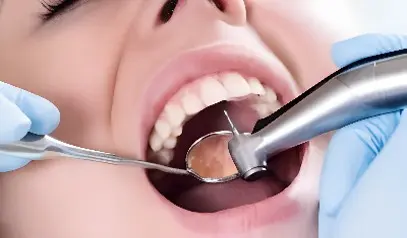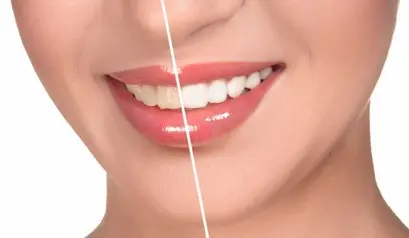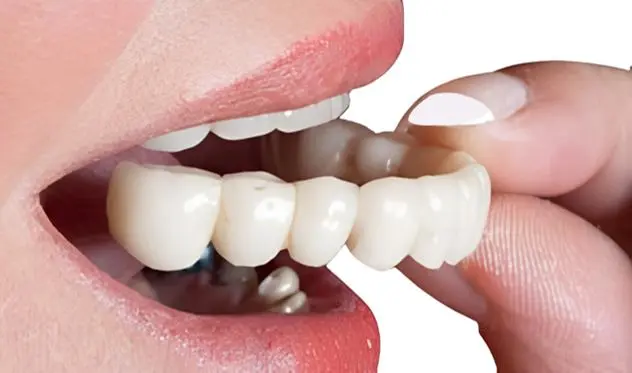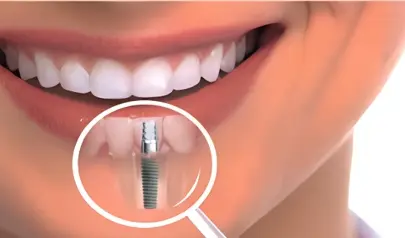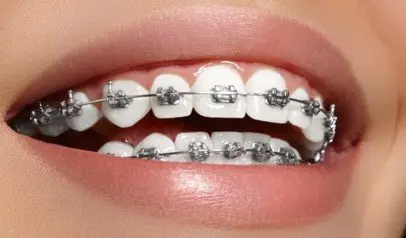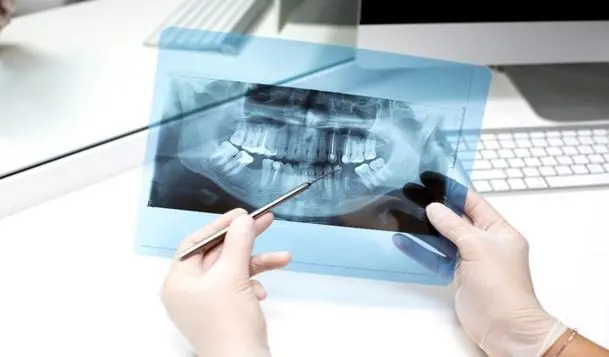Dreaming of a pearly white smile?
Special Offer:
Teeth Whitening
With Beyond II Technology
✔ A bright smile for a long time
✔ Quickly in one session
✔ Absolutely safe
Special
price
275€
Before
After

Our dental services
Comprehensive approach in dentistry
Dental treatment
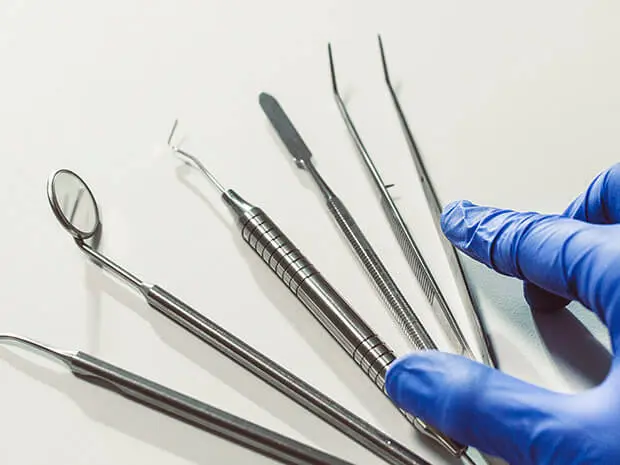
Dental caries treatment
Caries - a common tooth condition, can develop for a variety of reasons. Caries doesn't always result from poor oral hygiene, so it's crucial to detect caries in patients as early as possible to prevent the spread of infection to the nerve and beyond the tooth.
Treatment for caries is essentially the same - it is necessary to thoroughly clean all tissues of the tooth affected by caries (caries-infected dentin and enamel). Afterward, the tooth is restored, regaining its initial appearance through various dental materials.
Pulpitis treatment
Pulpitis is an inflammatory condition of the tooth's root canal, affecting the dental pulp. The pulp of the tooth contains blood vessels and nerves. Pulpitis is often a complication of dental caries but can also result from tooth trauma.
In pulpitis, the inflammatory process not only affects the nerve itself but also the entire neurovascular bundle and connective tissue of the tooth. As a result, a patient may lose the tooth, so it is essential to treat pulpitis as quickly as possible.
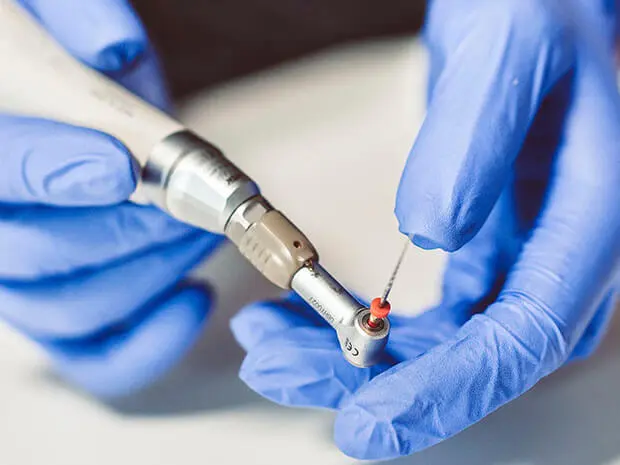
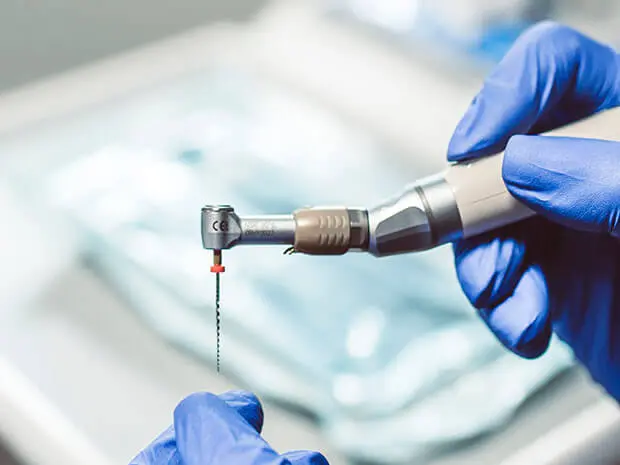
Treatment of periodontitis
Periodontitis is a disease of the periodontium, the tissues that anchor the tooth in place. Inflammation typically occurs around the apex (tip) of the tooth root.
Periodontitis develops as a complication of pulpitis. If the tooth pulp dies, the infection exits the root canals and spreads to the gum tissues. Failure to treat periodontitis in a timely manner can lead to the complete loss of the tooth.
Tooth restoration
In cases of tooth damage, complete restoration is always required – including the shape, natural structure, and color of the tooth. However, the primary goal of restoration is to restore the physiological functions of the tooth and achieve natural, correct interdental contacts.
Tooth restoration allows for the reconstruction of the natural aesthetics of the dental arch. It is crucial to obtain high-quality tooth restoration performed using the most advanced techniques and modern technologies.
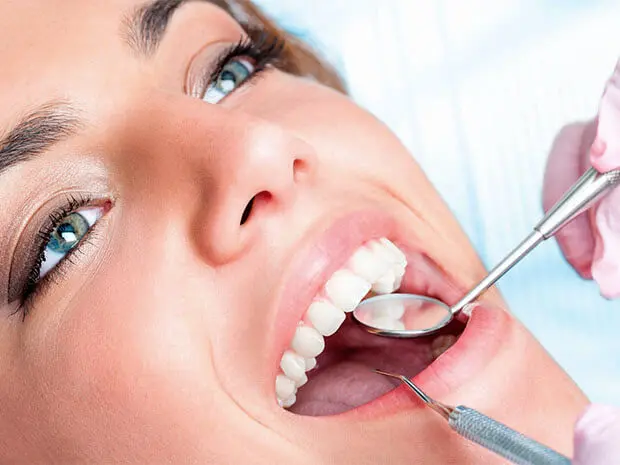
Hygiene and whitening
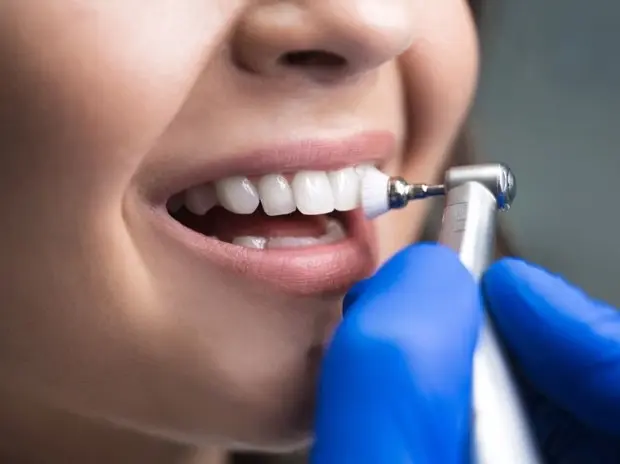
Teeth Polishing
The process commonly referred to as 'Teeth Polishing' is often perceived solely as a cosmetic procedure. However, it serves not only an aesthetic purpose but also acts as a preventive measure against many diseases. Teeth polishing involves the removal of roughness or irregularities. After all, bacteria and other substances that eventually turn into plaque accumulate much more slowly on a smooth tooth surface.
It is worth acknowledging that professional teeth cleaning is one of the most sought-after dental services. This procedure guarantees the health and longevity of your teeth. Professional dentists, thanks to extensive practice, will perform the procedure thoroughly and at the highest level.
Ultrasound cleaning
When tartar is detected (calcified bacterial plaque) on dental surfaces, our dentist uses another cleaning method, ultrasound. Ultrasound allows stones to removed if the enamel is damaged. Also, with the ultrasound it can remove the tartar that is under the gum.
An advantage of the ultrasound is its great antibacterial power. After ultrasound cleaning, the surface of the tooth is almost sterile.
Unlike dental plaque, tartar is much more complicated to move. It consists of the bacterial plaque itself hardened by the deposit of salts that are in suspension in the oral cavity. As the tartar plates grow, retraction of the gingival occurs and begins to deposit under the same and on the surface of the root of the tooth.
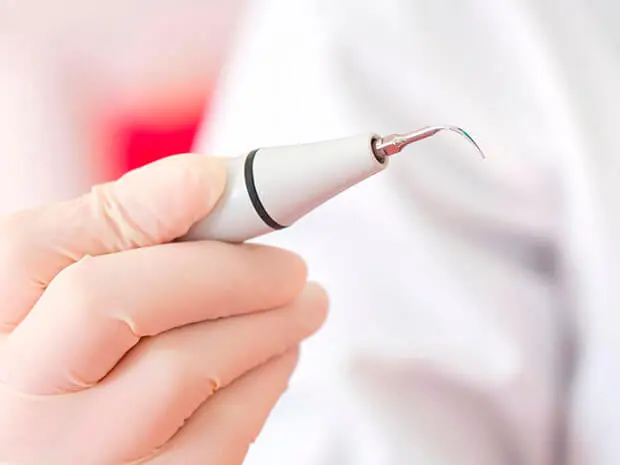
Prosthetics
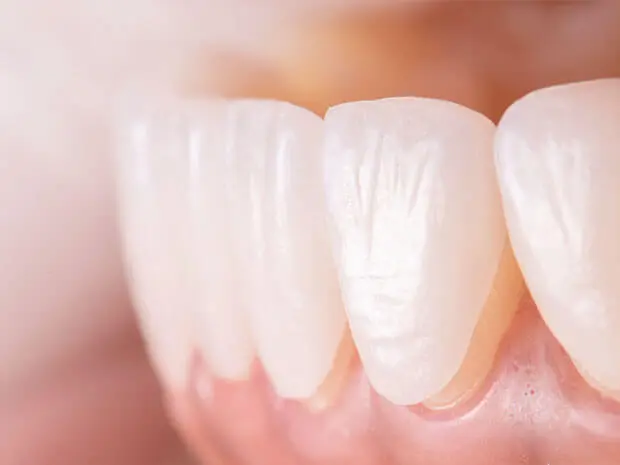
Dental Veneers
Dental Veneers - these are microprosthetics in the form of very thin plates that are installed on the front surface of teeth to achieve the desired shape and color. The thickness of veneers is usually about 0.5 mm, which ensures no discomfort during wear and requires minimal tooth preparation.
The material of veneers allows light to pass through, achieving a natural appearance of the teeth. The so-called 'Hollywood smile' often involves the use of veneers
Dental Crowns
Dental Crowns are one of the most common types of prosthetics. Crowns are non-removable prosthetics that replace the visible part of a damaged tooth. Dental crowns are used in cases of significant tooth damage when filling and restoring the tooth are no longer possible.
There are several types of dental crowns depending on the material, with the most common being metal-ceramic, ceramic, and zirconia crowns.
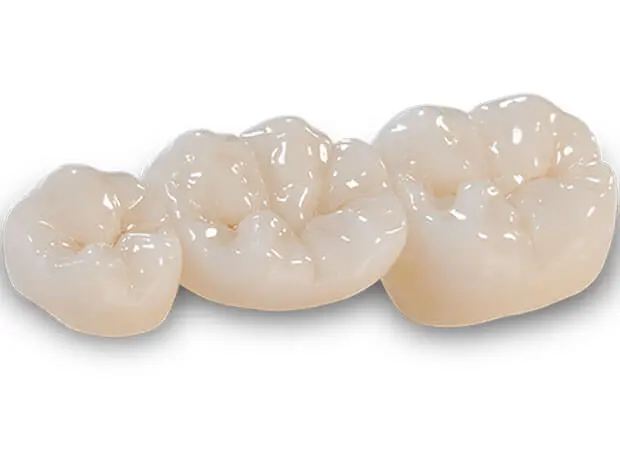
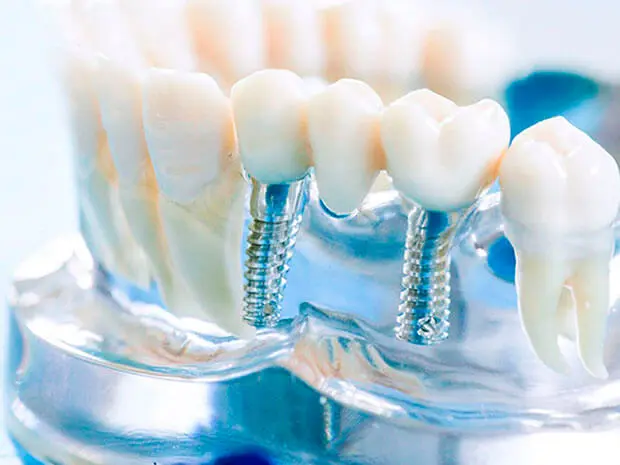
Implant-supported Prosthetics
Implant Prosthetics — the most reliable and aesthetic method of restoring lost teeth. The essence of prosthetics on implants is simple — an implant (an artificial metal root based on titanium, embedded in the jawbone) is used to install an abutment and crown.
From the standpoint of the aesthetics and chewing function of teeth, this is the most optimal way to restore missing teeth and does not require the treatment of adjacent teeth as supports.
Removable Prosthetics
Removable dental prostheses are orthopedic structures used in cases where several teeth are missing or there is complete absence of teeth in one or both jaws. When it is not possible to install an implant for any reason, a dentist-orthopedist typically recommends removable dental prostheses.
Modern removable dental prostheses are practically invisible, fairly lightweight, and do not cause discomfort when worn. With proper care and good hygiene, removable prostheses can maintain their appearance and serve for many years.
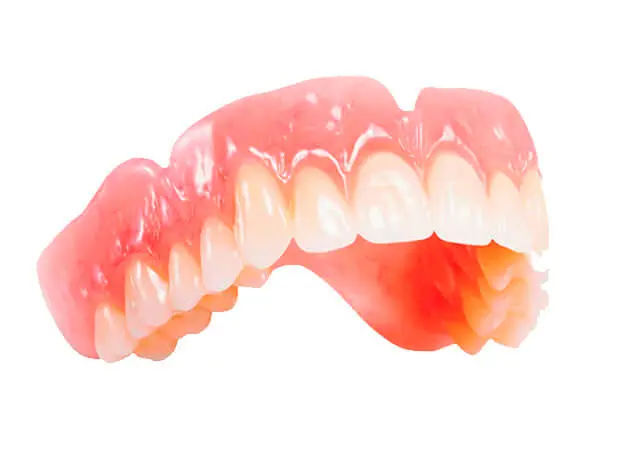
Implantology
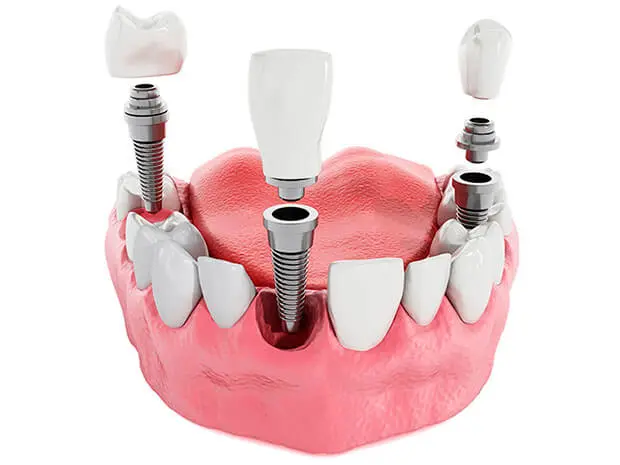
Dental Implants
An implant represents a titanium rod that is placed into the bone and serves as a support for attaching artificial teeth. Titanium is the most biocompatible material, rarely rejected by living tissues, and does not cause allergic reactions.
In our clinic, we only use high-quality implants from well-known brands.
Immediate Implantation
Immediate implantation is a technology in which the implant is placed in the location of the extracted tooth immediately after its removal. This technique is also known as immediate or one-stage implantation. In most cases, immediate tooth implantation is applied in the smile zone to conceal an aesthetic defect in the dental row and preserve the natural gum contour.
However, implantologists also practice immediate implantation for the restoration of individual chewing units.
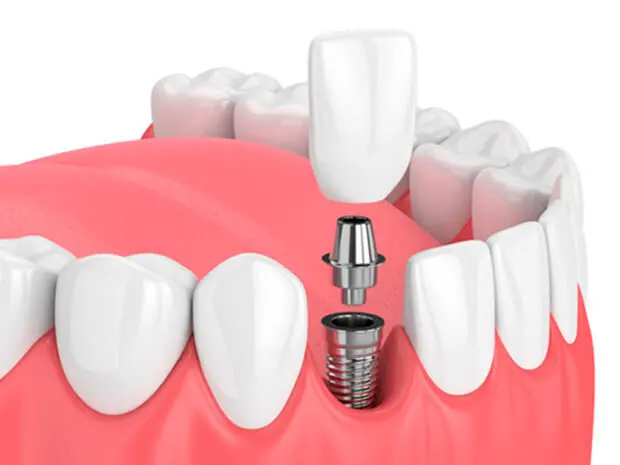
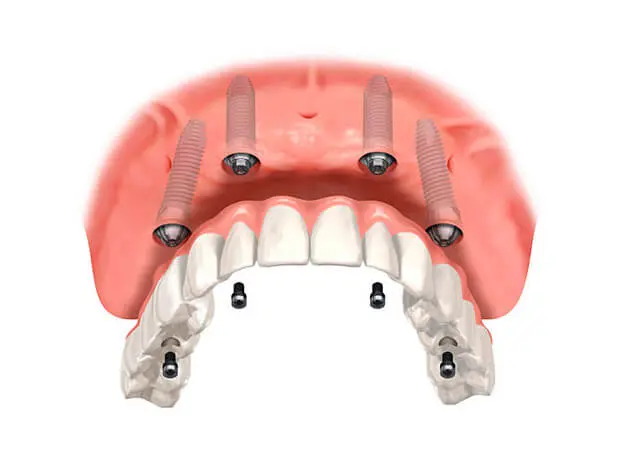
All-on-4 Implantation
All On 4 is a dental implantation method in which the upper or lower set of teeth is replaced by only four implants. These four implants act as a supporting mechanism for installing a new set of fixed teeth.
Compared to other implantation methods, the All On 4 technique does not require the same bone density for implant fixation.
Orthodontics
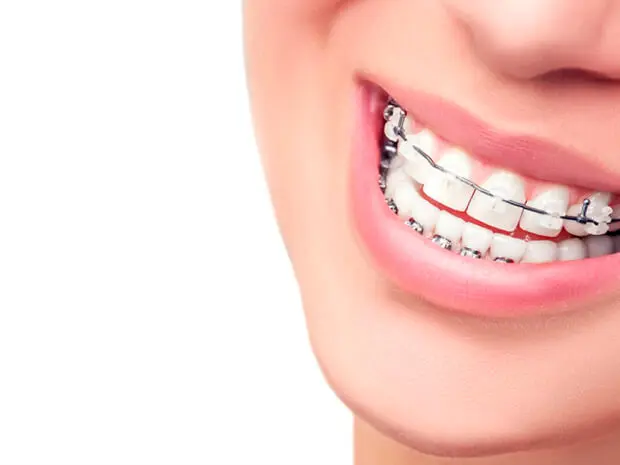
Orthodontic Braces System
Braces are non-removable orthodontic structures designed to correct the position of a person’s teeth in cases of bite irregularities and dental misalignment. The installation of braces or orthodontic systems is commonly used by orthodontists to correct the position of individual teeth and dental arches, as well as to address certain dental and jaw deviations.
In the slot of each bracket of the orthodontic system, a flexible archwire is placed, which has “shape memory.” Thanks to this, the orthodontist gradually moves the teeth as needed. Braces come in various types, including ceramic, metal, sapphire, and combined systems. With monthly adjustments by the orthodontist, expected positive results are achieved. The duration of orthodontic treatment varies individually for each patient.
Orthodontic Retainers
Orthodontic retainers are installed by an orthodontist during the retention phase after orthodontic treatment, following the removal of braces. Their purpose is to prevent tooth movement and the occurrence of relapse.
Orthodontists can use both removable and fixed (bonded) retainers. In terms of appearance, a retainer resembles a metal wire with a rigid and durable structure. The retainer is placed on the lingual (back) surface of the teeth using special composite materials. The duration of retainer wear varies for each clinical case and patient age.
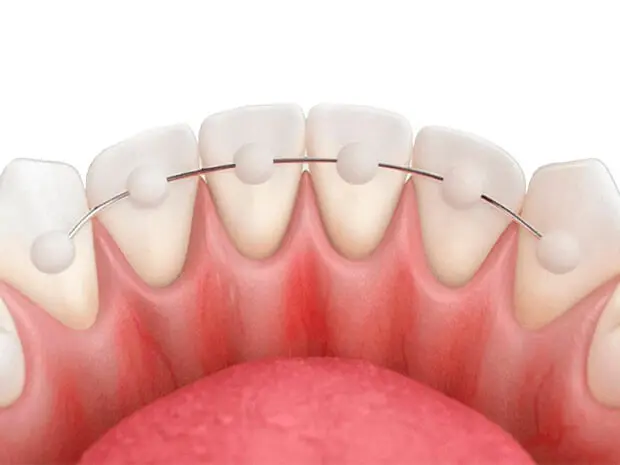
CT scan
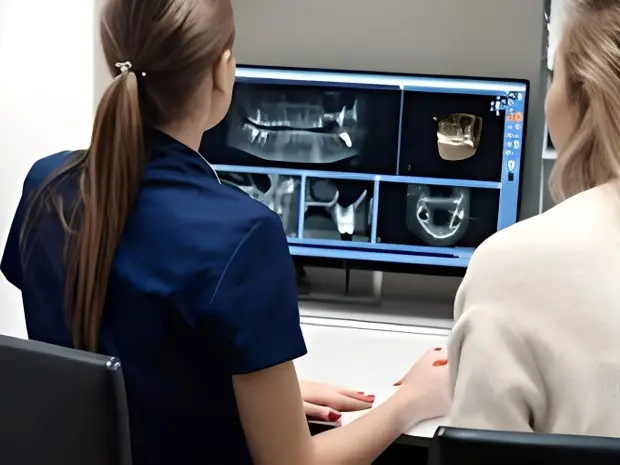
Diagnosis
Our clinic is equipped with a wide range of diagnostic and therapeutic equipment necessary for highly professional treatment and maxillofacial surgical procedures.
On the first visit, at the patient's request, an electronic medical record is created, displaying all essential health data. In addition, we perform a basic X-ray examination of both jaws, temporomandibular joints, accessory nasal sinuses, allowing timely detection of the slightest changes in bone tissue, joints, and air cavities of the skull.

